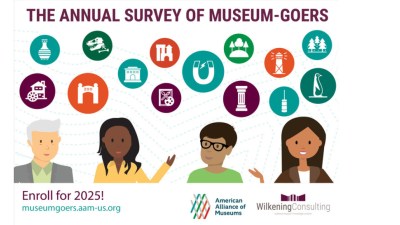
We all know the power of a story well told. One example: the books that became the Odyssey and the Iliad were told orally long before they appeared in book form. Imagine—so powerfully memorable were those tales that even in their great lengths they could be orally transmitted.
Knowing this, why do we not rely more on stories in our museums, rather than settling so often for labels orphaned from any compelling context? Granted, stories have become more a part of the mainstream of museums, but given their power to convey coupled with their proclivity to be memorable and sometimes even transformative, I think we still tend to underestimate the potential they offer us. Museums are at their best when they tell stories, when they connect us to kin across the ages, and when they inspire us to learn and experience more, all because we ourselves have been included in their, well, “story.” Let me give an example.
The Nantucket Historical Association initiated a program that invited local eighth graders to consider what “they would miss of Nantucket if it disappeared overnight.” Being residents on an island every bit of which was a National Historic Landmark, they had ample subjects from which to choose. Nevertheless, the program was a difficult ‘sell’ to an assembly of young people, especially at 8 a.m., the time when assemblies were for some pernicious reason held at the local schools. The question of “what would be missed” was followed therefore by an uncomfortable silence…until one child raised his hand and offered the following: “The skate park!” Soon he was followed by those companions who would miss the ice cream shop, the movie theater, and so on. In time, to the relief of the historians on staff, others pitched in their thoughts: “The elm trees on Main Street,” “The cobblestoned streets,” and, to the delight of all attending museums workers, “The Nantucket Historical Association and its Whaling Museum.” Now we were getting somewhere!
This was the deal: Write a paragraph describing two things you would miss if they disappeared overnight, submit them for review by our staff, and if yours were chosen out of the many (by assembly’s end, we had enthusiasm), then we would give you a camera to keep! We would have an island photographer show you how to take a good photo; and our staff would help you develop a wonderful 3×4 two-dimensional exhibition of these photos, labels and all. In the end, the product of the students’ labor would be displayed in the main gallery of the Nantucket Historical Association, and, get this, the students would host the opening reception, including selecting the nibbles for the evening two months hence.
Skip over related stories to continue reading articleWith this, the intrepid group of sixteen eventual winners were off, cameras in hand and tutors tagging along. Things were quiet for a couple of weeks, especially since we encouraged the children to consult with their families about their own answers to the question of what might be missed if gone. But after a while we began to get a sense that enthusiasm prevailed, and we were heading into very exciting waters with this concept. We awaited opening day with huge anticipation.
When the night came, Goldfish, licorice, ice cream, and salmon (?) adorned the tables, which were soon surrounded with guests, mostly family and friends who had been swept into the preparations, ever amazed with how dedicated the children were to their projects. Most impressive to us on staff was the multigenerational character of the grand opening: grandmothers, grandfathers, aunts, uncles, et al. were all there to find out what their younger family members considered the most important elements of the Nantucket landscape.
One student chose the Brant Point Lighthouse; another selected, as expected, the cobblestoned Main Street; and, of course, the skate park made the finals! Amidst the many images and exhibits, though, hung a most poignant and memorable one, which reminded me of the preeminent role “the story” plays in our lives:
On the far wall hung a photo not of a building or place, but of a person, an elderly man. With a deeply etched face, tanned darkly from the Nantucket sun, he sat in a chair with a serene smile on his face. It was the grandfather of the young exhibitor, and the label read, simply: “What would I miss most if it disappeared overnight? My grandfather, because he knows stories that nobody else knows.” It was the shortest label in the exhibition, and it was the most memorable.
Storytelling is but one of the aspects we will be covering during our two-year Aroha Fellowship period, especially in our special edition of AAM’s Museum magazine (September 2020) and during our convening on creative aging to be held at the High Museum of Art in Atlanta, November 5-6, 2020. Watch this space for more information and insight into the potentials inherent in creative aging initiatives for museums!
Mark Your Calendars: The American Alliance of Museums is holding a national convening on museums and creative aging at the High Museum of Art in Atlanta from November 5-6, 2020.
We are receiving excellent feedback on our survey regarding those topics you believe to be of most importance to their work. Let us know your thoughts! It only takes a moment!
Also, we are seeking guest bloggers who would like to share their thoughts and experiences in creative aging efforts. Just let me know if you have something you would like to contribute. It could be anything relevant: an upcoming conference, a program you have developed, a perspective you would like to share, etc. We are greatly enjoying the conversations these blogs are engendering!









Comments